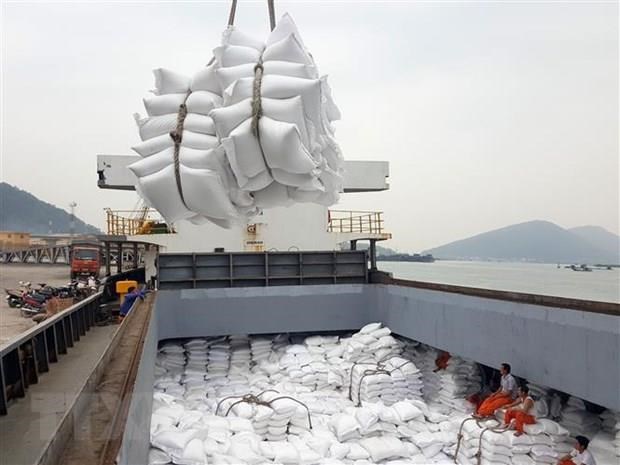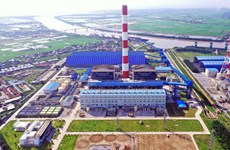Seven-month rice export up in volume, but down in value
Vietnam exported 4.01 million tonnes of rice worth 1.73 billion USD in the first seven months of 2019, up 2.1 percent in volume but down 14.3 percent in value year on year, according to the Ministry of Agriculture and Rural Development.
 Rice sacks are loaded onto a vessel for shipment at Cua Lo Port in Nghe An province (Photo: VNA)
Rice sacks are loaded onto a vessel for shipment at Cua Lo Port in Nghe An province (Photo: VNA)Hanoi (VNA) – Vietnam exported 4.01 million tonnes of rice worth 1.73 billion USD in the first seven months of 2019, up 2.1 percent in volume but down 14.3 percent in value year on year, according to the Ministry of Agriculture and Rural Development.
The figures include 651,000 tonnes worth 285 million USD in July.
In the year’s first half, the Philippines was the biggest buyer that purchased 33.7 percent of Vietnam’s rice exports.
Meanwhile, the markets with strong growth in rice imports from Vietnam include Ivory Coast (up 67 percent), China’s Hong Kong (60 percent) and Saudi Arabia (38 percent).
Export rice prices averaged 431 USD per tonne in the six months, down 15 percent from the same period of 2018.
Minister Nguyen Xuan Cuong said this year, prices of agricultural products in the global market have decreased by 5 – 15 percent. Notably, rice prices have fallen sharply in all segments.
He explained that the El Nino impact in late 2015 and the first half of 2016 led to a decline in the world’s grain food output, forcing countries to re-balance their reserves. As a result, the rice market in 2018 was very good in terms of both export volume and value, helping Vietnamese rice prices reach a record of over 500 USD per tonne on average.
However, in 2019, many countries, including big ones that used to purchase a large volume of Vietnamese rice, have stocked up enough of the food.
Cuong said in the short term, it is necessary to explore new markets, especially those in Africa and ASEAN, to make up for the drop in shipments to China – a major importer. Meanwhile, production costs must be reduced by applying scientific advances to ensure profit for farmers.
In the long term, the agricultural sector is planning to switch 500,000ha of land currently under rice into that for aquaculture or fruit trees and other cash crops that suit the strengths of each locality to ease the rice output pressure.
The rice industry will need to promote processing and value chains so as to make use of not only the grain but also its by-products like husk, bran and oil and diversify products such as organic and medicinal rice, the minister noted. -VNA












